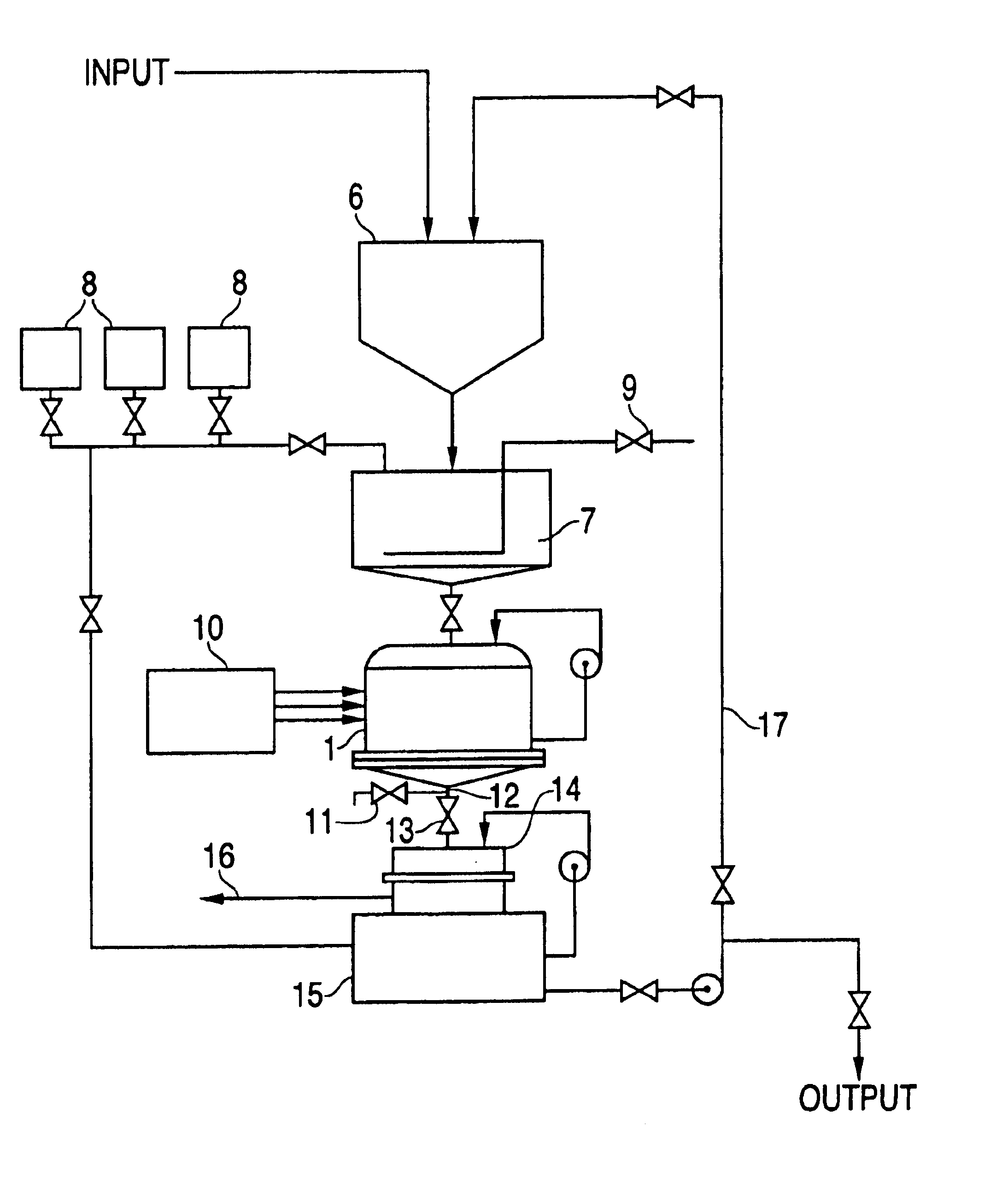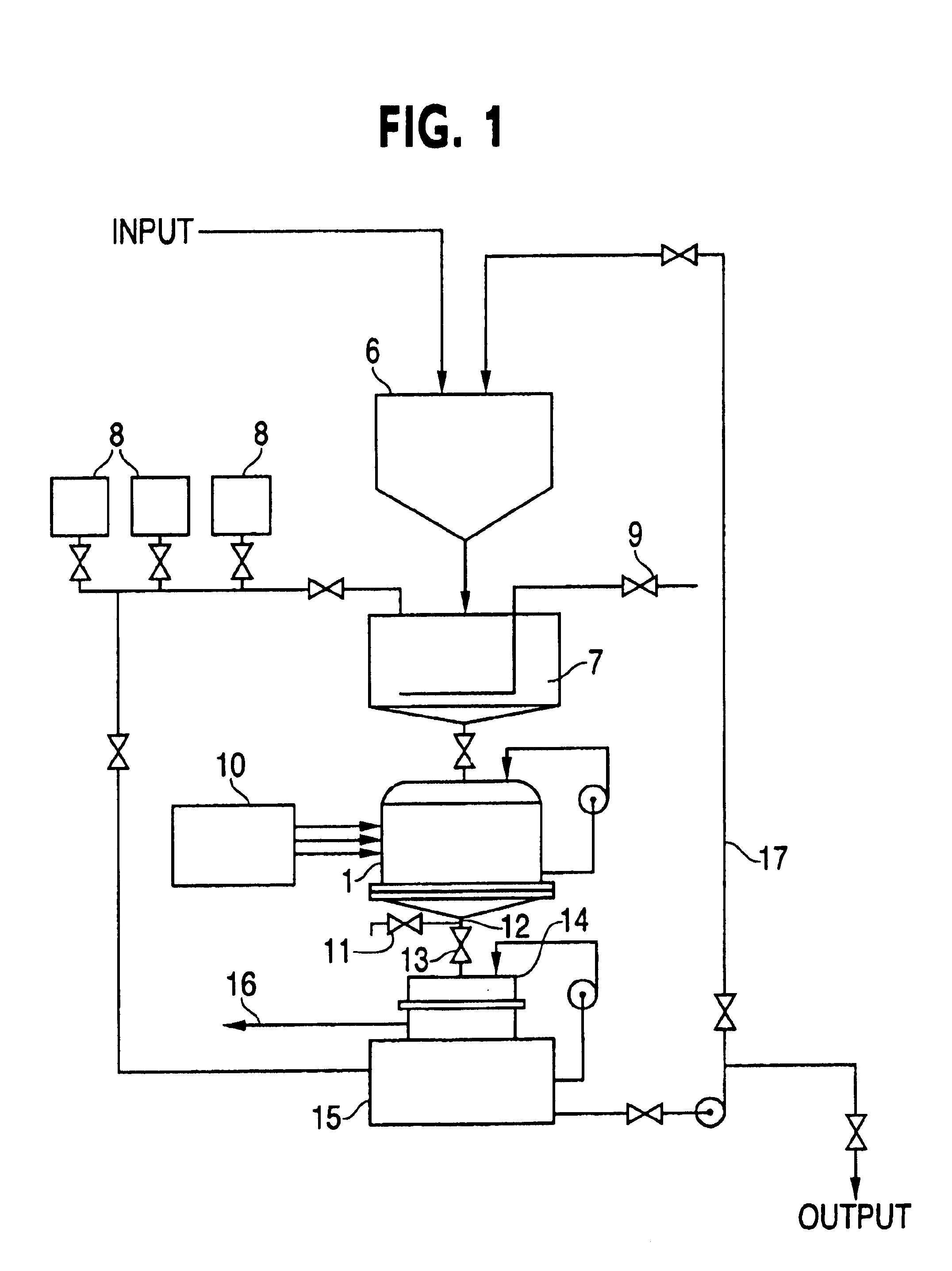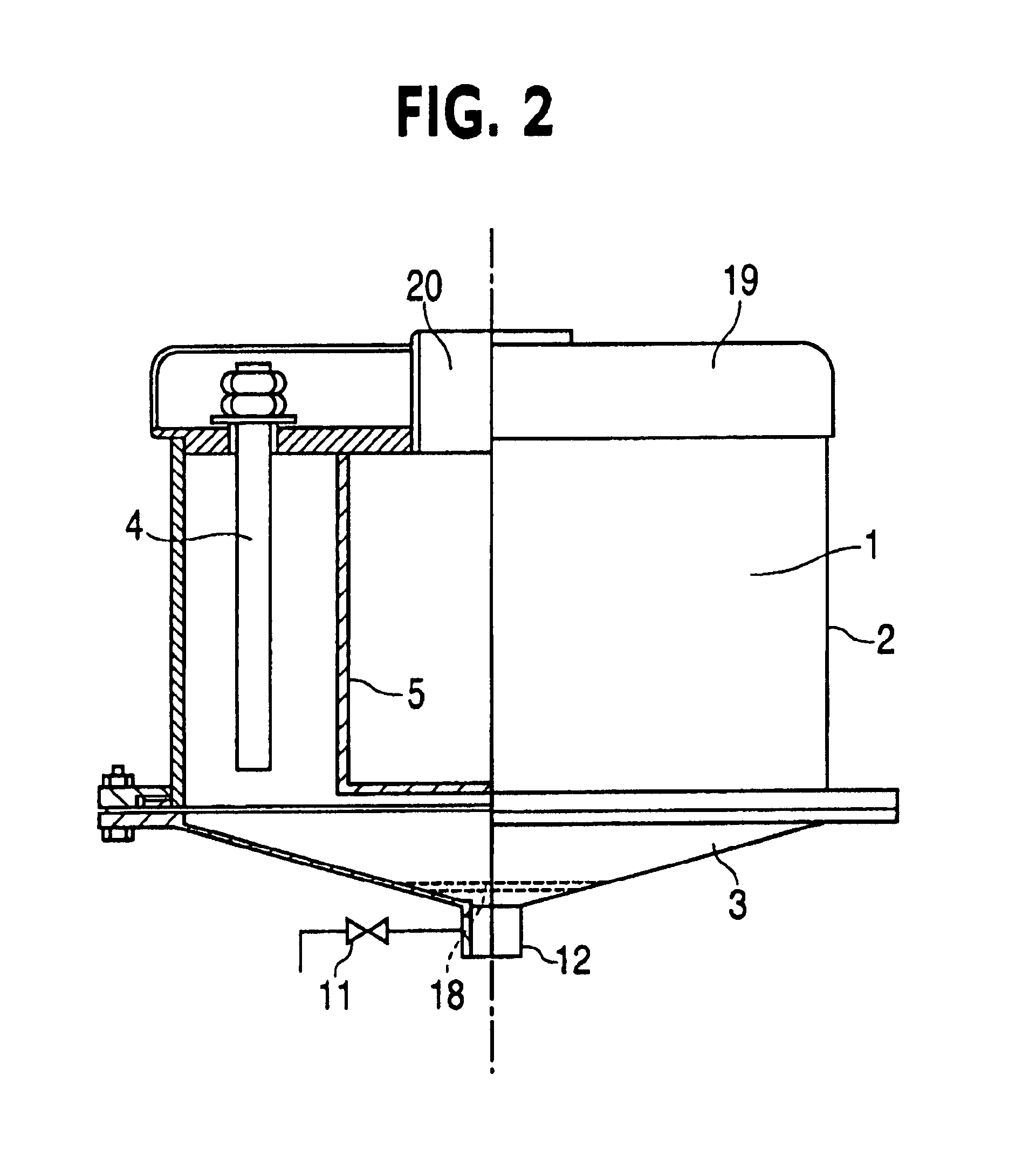Method and device for electroextraction of heavy metals from technological solutions and wastewater
a technology of electroextraction and wastewater, applied in the field of industrial wastewater purification, to achieve the effects of reducing the level of heavy metals, increasing the extraction rate, and less energy consumption
- Summary
- Abstract
- Description
- Claims
- Application Information
AI Technical Summary
Benefits of technology
Problems solved by technology
Method used
Image
Examples
example 2 (table 3)
[0102]The subject of the test was wastewater from a tannery containing Cr3+. Testing was conducted on a laboratory electrocoagulator with a capacity of 25 L. Steel pipes 34 mm in diameter and 830-mm in length were used as electrodes. Number of electrodes —6. The electrodes were placed into plastic perforated pipes. Voltage=380V. The electroconductivity of solution —2.3 μm / cm. Table 3 shows test results for wastewater from the tannery treated in the laboratory electrocoagulator.
[0103]
TABLE 3CurrentContentTime,strength,Temperature,pHof copper,minA° C.unitmg / L0100607.314.824595—0.34
example 3
[0104]Subject of test—wastewater from a tannery containing Cr3+ as in example 2, but with lower content of Cr3+ and lower electrical conductivity.
[0105]The test was conducted with a laboratory electrocoagulator with a capacity 25 L. Steel pipes 34 mm in diameter and 830-mm in length were used as electrodes. Number of electrodes 3. The electrodes were placed into plastic perforated pipes. The inter-electrode distance (side of equilateral triangle) was 195 mm. Voltage —! 380V. Solution conductivity —2.1 μSm / cm, pH=7.74. Content of Cr3+ after electrocoagulation decreased from 0.06 mg / L to 0.02 mg / L.
example 4 (
Tables 4, 5)
[0106]Subject of test—wastewater after etching of printed circuit boards. Initial water analysis is shown in table 4.
[0107]
TABLE 4DryPHCu2+FetotalResidueCl−SO42−Al3+NH4+Zn2+Ni2+Ag+Ca2+Mg2+unitsMg / L8.0-9.510-120Less than 0.11,000300-500up to 200less than 0.0150-1000Less than 0.01Not foundnot found0.0150.0031,500
[0108]Tests were conducted on a laboratory electrocoagulator with capacity 25L. Steel pipes 34 mm in diameter and 830-mm in length were used as electrodes. Number of electrodes —6. Electrodes were placed into plastic perforated pipes. Voltage=380V, duration of electrocoagulation —7 min. until temperature reached 85° C. The current was changed from 36A to 53A. The pH value decreased from 8.99 to 8.62 pH units. The conductivity was 2.3 μm / cm. Initial concentration of copper —11.4 mg / L. Copper content after electrocoagulation and filtration —0.30 mg / L. Test results are represented in Table 5.
[0109]
TABLE 5ContentTime,Current,Temperature,PHof copper,minA° C.unitmg / L0362...
PUM
| Property | Measurement | Unit |
|---|---|---|
| concentration | aaaaa | aaaaa |
| concentration | aaaaa | aaaaa |
| concentration | aaaaa | aaaaa |
Abstract
Description
Claims
Application Information
 Login to View More
Login to View More - R&D
- Intellectual Property
- Life Sciences
- Materials
- Tech Scout
- Unparalleled Data Quality
- Higher Quality Content
- 60% Fewer Hallucinations
Browse by: Latest US Patents, China's latest patents, Technical Efficacy Thesaurus, Application Domain, Technology Topic, Popular Technical Reports.
© 2025 PatSnap. All rights reserved.Legal|Privacy policy|Modern Slavery Act Transparency Statement|Sitemap|About US| Contact US: help@patsnap.com



